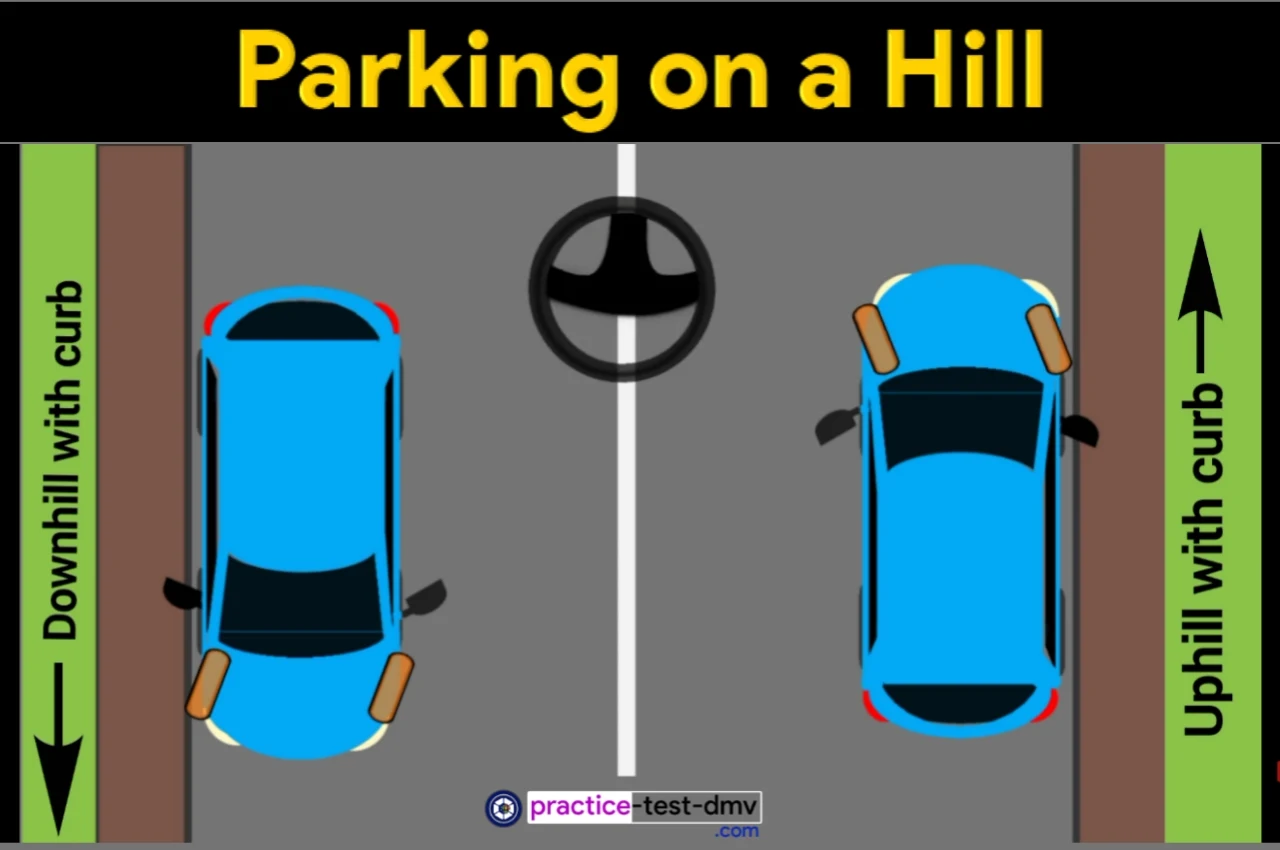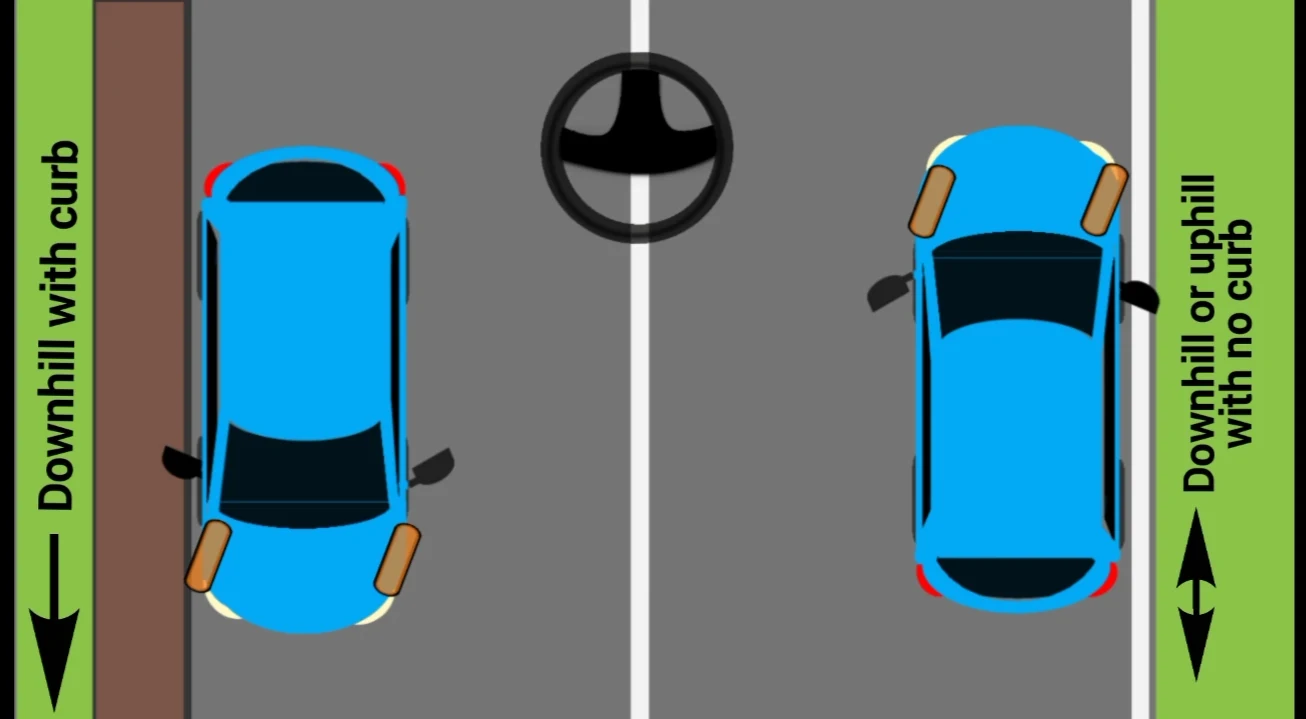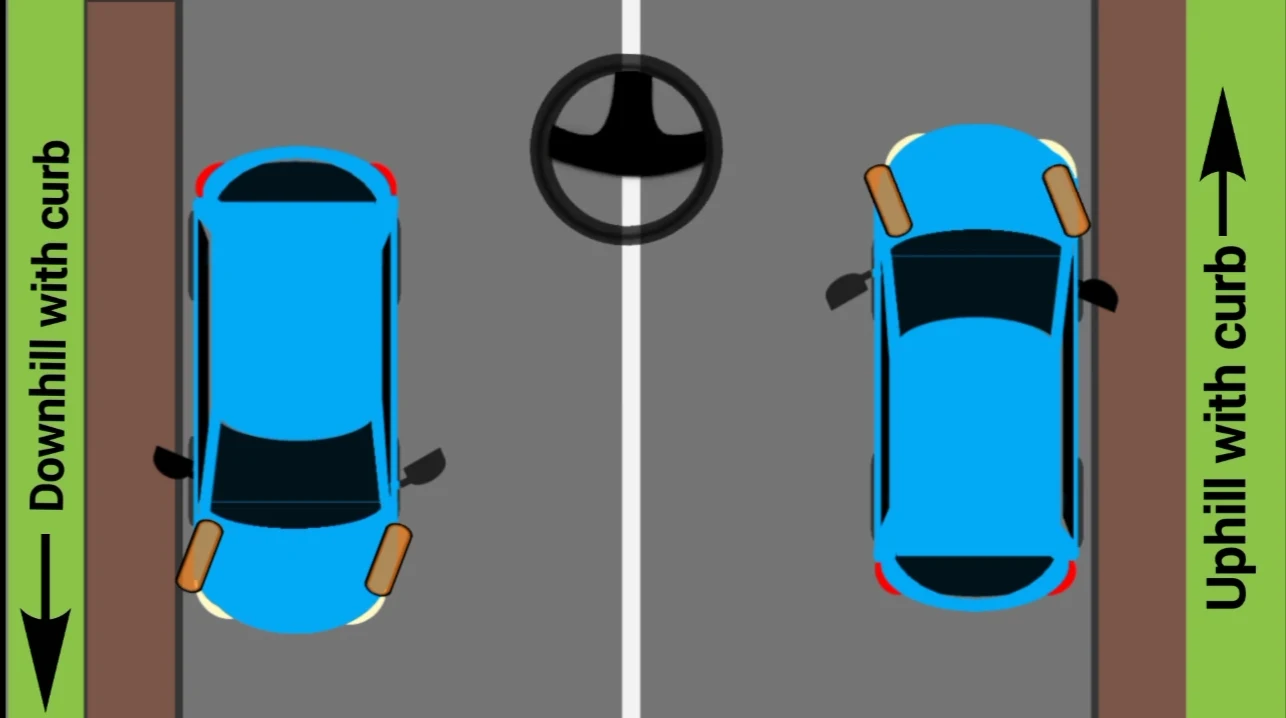Parking on hills can be a challenging manoeuvre for many drivers, requiring both precision and control over your vehicle and its surroundings. One crucial aspect is knowing how to position your wheels to prevent your vehicle from moving into traffic in case of brake failure. Let's break down the key steps to park like a pro on hills.
Steering the Right Way
The direction you turn your wheels depends on whether you are parking uphill or downhill, as well as the presence of a curb.
Parking on a Hill with a Curb
Downhill Parking: Turn your steering wheel toward the curb.
Uphill Parking: Turn your steering wheel away from the curb and let your vehicle gently roll back to touch the curb. This acts as a safety mechanism in case of brake failure.
Parking on sloping driveway, Headed downhill and Headed uphill
On a sloping driveway:Turn the wheels so the vehicle will not roll into the street, leave the vehicle in gear and set the parking brake.
Headed downhill: Turn your front wheels into the curb or right toward the side of the road.
Headed uphill: Turn your front wheels away from the curb (left) and let your vehicle roll back a few inches. The wheel should gently touch the curb.
Headed either uphill or downhill when there is no curb: Turn the wheels so the vehicle will roll away from the centre of the road if the brakes fail.
Parking on a Hill without a Curb
If there's no curb or it's not high enough to stop your vehicle, turn your wheels so that your vehicle would roll away from traffic in the event of brake failure. This ensures your vehicle rolls off the road rather than onto it.
Manual Transmission Considerations
For those driving a manual car, leaving the vehicle in the correct gear is crucial to prevent unintended movement.
Uphill Parking: Manual cars should be in first gear.
Downhill Parking: Manual cars should be in reverse gear.
Choosing the correct gear essentially means selecting the gear that points up the slope, utilising the engine braking effect to act as a second brake along with the parking brake.
Driver Checklist for Hill Parking
Before leaving your parked vehicle on a hill, run through this checklist:
1. Curb Check: Does the road have a curb?
2. Uphill or Downhill: Are you parked uphill or downhill?
3. Wheel Position: Are the wheels turned in the correct direction?
4. Safety Assessment: Will the vehicle roll into traffic or off the road in case of brake failure?
5. Gear Check: Is the car in the correct gear, pointing up the slope?
6. Parking Brake: Have you activated the parking brake?
Following these steps ensures a safe and secure hill parking experience. Remember, safety is paramount. Happy parking!




